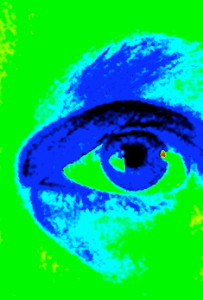"Food manufacturers just love it when you can't stop with a single serving. For them, it is the sound of cash registers ringing in sales. But what does this mean to us? It means that somehow the food is now in control. Somehow it has been manipulated to cause you to overeat."
Source: 20 Names for Nasty MSG | Rodale Wellness
20 Names for Nasty MSG
This ingredient can make you fat and sick in so many ways.
By Jayson Calton, PhD, Mira Calton, CN July 30, 2015
Food manufacturers just love it when you can't stop with a single serving. For them, it is the sound of cash registers ringing in sales. But what does this mean to us? It means that somehow the food is now in control. Somehow it has been manipulated to cause you to overeat.
Monosodium glutamate is the go-to add-in to create this desired effect. So much so that this menacing flavor enhancer is found in almost all processed and packaged foods in the United States. MSG-induced obesity is such an accepted concept in scientific circles that when studies require obese animals, the first thing they are given is MSG. Scientists in Spain found that giving laboratory rats MSG increased food intake by 40 percent.
MSG works as an obesogen in three distinct obesity-inducing ways. The most obvious way is that it intensifies the tastiness of any treat, and this makes you desire it even more. Second, MSG has been shown to make us leptin resistant. Remember that leptin is the hormone that makes you feel full. Why would you ever put down a snack if your brain never gets the message to stop eating it? Finally, MSG causes the secretion of insulin, your fat-storage hormone, which drops your blood sugar and makes you hungrier faster.
More: 4 'Healthy Food' Offenders
However, this ingredient also reduces our micronutrient levels because it is an excitotoxin. This means it can cross the blood-brain barrier and overexcite your cells to the point of damage or death, causing brain damage to varying degrees and potentially even triggering or worsening learning disabilities, Alzheimer's disease, Parkinson's disease, Lou Gehrig's disease, and more. It's true--and your micronutrient levels pay the price because your available antioxidants are used at an accelerated rate when trying to repair MSG brain toxicity.
Rather than performing other important functions in your body, available antioxidants—such as vitamins C and E and selenium—are called on to repair the damage. Additionally, magnesium, chromium, and zinc are all very important protectors of neural cells, so their use is also accelerated in the presence of MSG.
More: Make Your Own 'Instant' Cup of Noodles
Can you imagine how many other essential bodily functions may not be able to be performed properly because food manufacturers snuck MSG into the recipe? Kick it to the curb by watching out for these ingredients that could harbor MSG:
• Autolyzed yeast
• Autolyzed yeast protein
• Calcium glutamate
• Glutamate
• Glutamic acid
• Hydrolyzed corn
• Ingredients listed as hydrolyzed, protein fortified, ultra-pasteurized, fermented or enzyme modified
• Magnesium glutamate
• Monoammonium glutamate
• Monopotassium glutamate
• Natural flavors (ask manufacturers their sources, to be safe)
• Pectin
• Sodium caseinate
• Soy isolate
• Soy sauce
• Textured protein
• Vegetable extract
• Yeast extract
• Yeast food
Adapted from The Micronutrient Miracle
¬¬¬¬¬¬¬¬¬¬¬¬¬¬¬¬¬¬¬¬¬¬¬¬¬¬¬¬¬¬¬¬¬¬¬
Janet's Eye on the media.........


